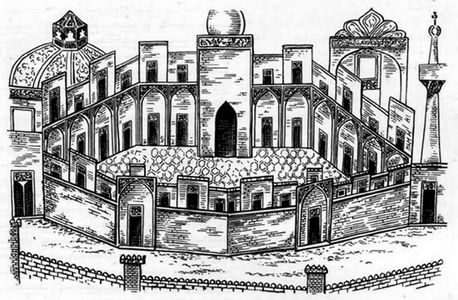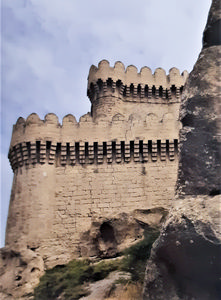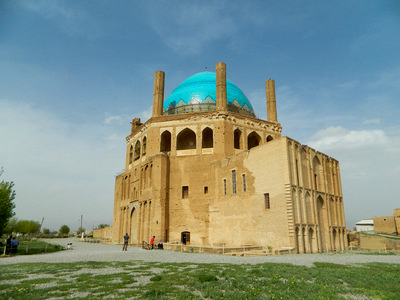Azerbaijani culture in 13th -14th centuries
Schools and Madrasas.Although the Mongol attacks had a negative impact on Azerbaijani culture, it continued developing. Azerbaijan remained one of the main scientific and cultural centers of the East. The education system was based on schools and madrasa. There was mainly primary education at schools. Here pupils were taught to read and write. The special attention was paid to the Sharia lessons, reading the Quran and studying Oriental literature. Secondary schools or universities were called madrasa. There were madrasas in each of the major cities like in Tabriz called Qazaniyya, Giyasiyya, Falakiyya, Magsudiyya and Nasriya in the 13th and 14th centuries.
Rab'-e Rashidi madrasa in Tabriz was among the biggest universities in the East. The madrasa in Rab'-e Rashidi settlement of Tabriz, established by Rashid al- Din Fadlullah Hamadani, the vizier of Ilkhanate ruler Mahmud Ghazan (also known as Ghazan khan), was the second higher education institution in the East after the Al- Nizamiyya madrasah in Baghdad. In fact, such fields as natural sciences, history, philosophy, medicine, theology, astronomy and others were taught at this university. About 500 scholars taught at the university, 7,000 students studied. Some 6,000 students came from different Muslim countries. Along with educational buildings, there were campuses for scholars and students and a big library with 60,000 books in Rab'-e Rashidi madrasah. The best doctors invited from the countries starting from Egypt and ending with China worked in the Dar Al Shifa Hospital in Tabriz, as well as taught the students studying medicine. The second biggest library in the second biggest settlement, Sham Qazan near Tabriz, had the most valuable books in the entire East.
Development of science.The observatory opened in Maragheh in 1259 under the leadership of Nasir al-Din Tusi and the observatory built in Sham Qazan in early 14th century became the centers of astronomy in the East. The Maragheh observatory had a positive impact on the development of science in Europe, as well as on the scientific activity of the Ulugh Beg observatory in Samarkand and Beijing observatory.
Nasir al-Din Tusi (1201 - 1274), who played an invaluable role in the activity of the Maragheh observatory, was an adviser to Hulagu Khan and a vizier of Abaqa khan. Tusi made great contributions to the science by his works “Zic Elkhani” (Elkhan Tables), Commentary on Euclid's Elements. Tusi made very precise tables related to the motions of the planets and calculated the dimensions of almost all the planets. Tusi’s works ‘Nasirean Ethics’ has been used as a textbook at schools in Eastern countries for centuries.
Furthermore, special attention was paid to the world history and Azerbaijani history in the grand vizier of the Ilkhanate state Rashid al-Din Fadlullah Hamadani’s famous work Jāmiʿ al-Tawārīkh ("Compendium of Chronicles").
The works by Zakariya al-Qazwini, Hamdallah Mustawfi Qazvini, and Abd ar- Rashid al- Bakuvi were especially remarkable in the field of geography. Additionally, Hindushah Nakhchivani and his son Muhammad Nakhchivani were well-known in the field of linguistics.
Architecture.Mardakan circular and quadrangular castles in Absheron, Nardaran, Ramana fortresses, “Alishah mosque” (later known as “Arg fortress”) built by Ilkhanate rulers vizier, Tajaddin Alishah, in Tabriz, Gulustan tomb in Nakhchivan, Muhammad Khodabandeh tomb, built in Soltaniyeh in 1305-1313, Barda tomb (1322), Garabaghlar Tomb Complex which connects Goshaminara in the architectural complex in Garabaghlar village, were very valuable architectural monuments of 13th- 14th centuries.
Safi al-Din al-Urmawi (1230-1294) and Abd al-Qadir al-Maraghi (1353-1445) made invaluable contribution to the development of the art of music. Al-Maraghi was the first who classified mughams.









_tn.jpg)
_tn.jpg)





